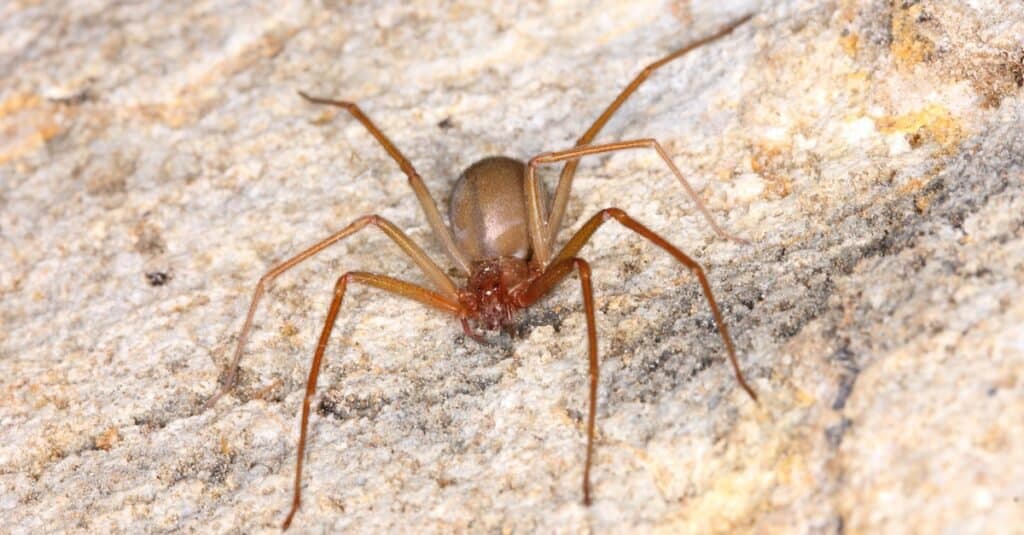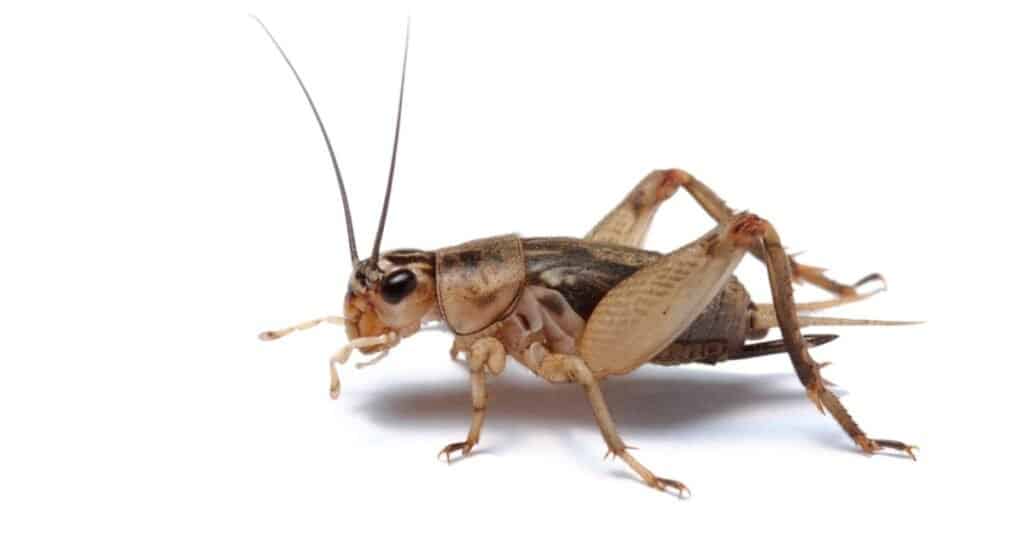If you have ever driven through Arizona and seen the Grand Canyon, then you know what the climate is like. It’s a dry desert full of intriguing animals and insects. You never know what you will find in the sand or the red rocks of Sedona.
All manner of creatures make their home in the Grand Canyon State, so it’s no marvel that some people may wonder if the brown recluse spider also does. Spiders hide in the cracks and crevices, the forgotten spaces of our world. Does the brown recluse spider do the same in Arizona?
What Are Brown Recluse Spiders?

Brown recluse spiders are native to the midwest and south of the United States.
©Nick626/Shutterstock.com
Brown recluse spiders are part of the family of recluse spiders. They have necrotic venom. These spiders are one of only three spiders in the United States that require medical care for their bites. Their bites can turn into ulcers and spread infection through the body.
Brown recluse spiders are most often found in the south of the United States or the central territories. They are also known as “fiddleback” spiders or “violin” spiders because of their markings.
The brown recluse spider lives around two years, and the egg-laying time is between May and July. When laying eggs, the female spiders lay in batches, so they lay a few egg sacs containing fifty eggs. Brown recluse spiders are fully grown after a year.
What Do Brown Recluse Spiders Look Like?

Brown recluse spiders have brown bodies with a violin pattern on their backs.
©Physics_joe/Shutterstock.com
The first thing to know about a brown recluse spider is that they have six eyes instead of the usual eight, and they are placed in pairs on the sides of its face, and one centrally.
Brown recluse spiders also have violin-type markings on their bodies, which gives them their other names of “fiddleback” or “violin spiders.” These types of names are crucial so that people can recognize the kind of spider they have encountered.
The violin markings are not the best way to identify the brown recluse, as other spiders have similar markings. Instead, it’s essential to know that only two different types of spiders have eyes positioned similarly.
The brown recluse markings can also change depending on their age, with older spiders having darker markings and younger ones having lighter.
How Common Are Brown Recluse Spiders in Arizona?

Brown recluse spiders are not common in Arizona.
©Pong Wira/Shutterstock.com
Brown recluse spiders are not common in the state of Arizona. It is unlikely to find them hiding in your corners or closets. Instead, a cousin to the brown recluse far more common is the Sonoran brown & Mojave brown spiders.
There are also different species of recluse spiders, and what you would find in Arizona is the Arizona brown spider, which is still not relatively common.
Brown recluse spiders are not known to show up outside their native territories. Unlike other spiders, they can’t travel as easily or survive in every climate. Therefore, you will not likely come across a true brown recluse in Arizona.
Where Do Brown Recluse Spiders Live?
The brown recluse spider travels fairly easily, hiding in bags and shoes and the like. They don’t tend to establish themselves outside of what is considered their native range. Instead, they live in the south and central midwest of the United States. They tend to live more in nature, not near heavy populations of people.
The brown recluse spider is often over-reported and is not as common as most people think. People get afraid that every little brown spider is a brown recluse, but studies have shown that they have misidentified it often. Even medical professionals are known to have mistakenly identified brown recluse bites.
What Do Brown Recluse Spider Bites Look Like?
Spider bites look how one would expect at first glance. Red and swollen with two pinpricks to mark the spider’s fangs, though those may not be visible. Then over time, the swelling gets worse, and the spot gets warm. A red ring starts showing around the initial bite spot.
Once the spot looks like a bulls-eye, you know it’s more than the average mosquito bite. The bulls-eye will grow larger and usually expands downward with blood flow. Next, it begins to blister over as the venom takes hold.
The skin of the wound turns blue or purple, then black. This is due to the tissue dying. This usually happens within the first 24-48 hours. The wounds from the bite can turn into huge, toxic ulcers.
Ultimately it’s not the venom that is the danger. It’s the necrotic tissue that forms from it that then can spread, causing a deep infection that’s difficult to beat. If you believe a brown recluse spider has bitten you, then seek medical attention right away.
What Do Brown Recluse Spiders Eat?

Crickets are on the menu of brown recluse spiders.
©iStock.com/PetrP
Brown recluse spiders are not known to be aggressive when it comes to biting humans, but can the same be said for their hunting tactics?
These spiders build the webs in the loose, chaotic way that they do to warn them of impending danger or food. Once the prey has made itself known, the brown recluse can do its job of catching it to consume.
The brown recluse spider eats crickets, silverfish, and other smaller insects. Because they are nocturnal, their diet is primarily other insects that come out at night. Then when morning arrives, they go back and hide in their crevices and hidden places.
The photo featured at the top of this post is © Pong Wira/Shutterstock.com
Thank you for reading! Have some feedback for us? Contact the AZ Animals editorial team.






